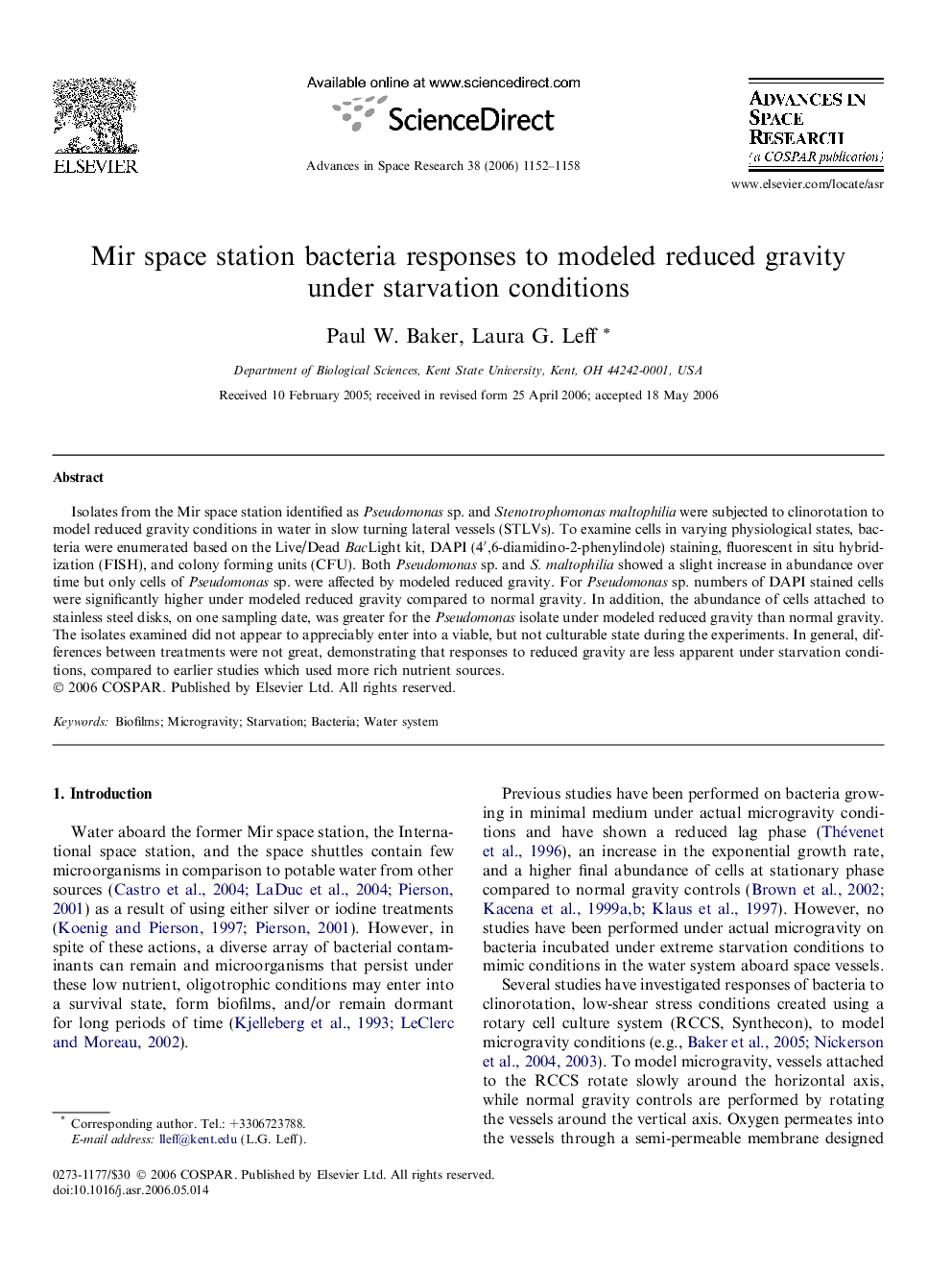| Article ID | Journal | Published Year | Pages | File Type |
|---|---|---|---|---|
| 1769364 | Advances in Space Research | 2006 | 7 Pages |
Isolates from the Mir space station identified as Pseudomonas sp. and Stenotrophomonas maltophilia were subjected to clinorotation to model reduced gravity conditions in water in slow turning lateral vessels (STLVs). To examine cells in varying physiological states, bacteria were enumerated based on the Live/Dead BacLight kit, DAPI (4′,6-diamidino-2-phenylindole) staining, fluorescent in situ hybridization (FISH), and colony forming units (CFU). Both Pseudomonas sp. and S. maltophilia showed a slight increase in abundance over time but only cells of Pseudomonas sp. were affected by modeled reduced gravity. For Pseudomonas sp. numbers of DAPI stained cells were significantly higher under modeled reduced gravity compared to normal gravity. In addition, the abundance of cells attached to stainless steel disks, on one sampling date, was greater for the Pseudomonas isolate under modeled reduced gravity than normal gravity. The isolates examined did not appear to appreciably enter into a viable, but not culturable state during the experiments. In general, differences between treatments were not great, demonstrating that responses to reduced gravity are less apparent under starvation conditions, compared to earlier studies which used more rich nutrient sources.
